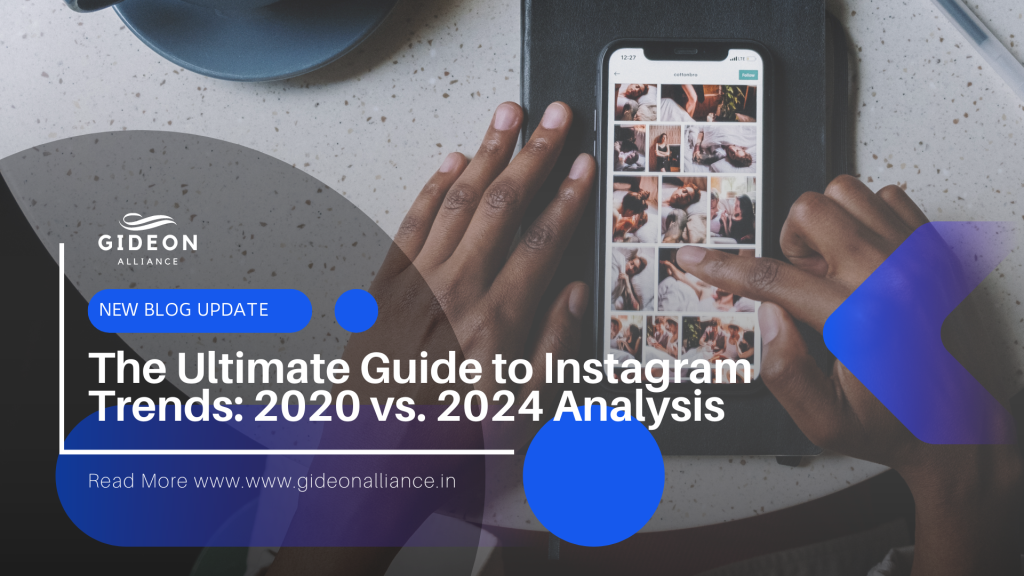
To provide a comprehensive comparison of Instagram marketing trends between 2020 and 2024, let’s look at several key aspects:
- Content Formats: The types of content that have been popular on Instagram have evolved. For instance, while static posts and traditional photo sharing were prevalent in 2020, the shift towards video content, including Reels and Stories, has gained momentum by 2024. The platform’s emphasis on video content aligns with user preferences for engaging and dynamic visual experiences.
- E-commerce Integration: Instagram has significantly expanded its e-commerce capabilities since 2020. With features like Instagram Shops, product tags in posts and stories, and more seamless in-app shopping experiences, brands in 2024 are more equipped to drive sales directly through the platform.
- Use of Augmented Reality (AR): While AR filters were already in use in 2020, their sophistication and application for brands have grown. In 2024, AR on Instagram allows for more immersive product try-ons and interactive experiences, enhancing user engagement and potentially influencing purchase decisions.
- Algorithm Changes and Content Discoverability: Instagram’s algorithm has continually evolved to prioritize content that engages users the most. By 2024, understanding and adapting to these algorithm changes has become crucial for marketers to ensure visibility and engagement. The platform’s push towards personalizing user feeds has also affected how brands strategize content creation and distribution.
- Influencer Marketing: While influencer marketing was a major strategy in 2020, its landscape has diversified by 2024. There’s a shift towards long-term partnerships, authenticity, and leveraging micro-influencers who have niche but highly engaged audiences. This reflects a deeper understanding of influencer impact beyond just follower counts.
- Sustainability and Social Responsibility: Consumers have become more concerned about sustainability and social issues, influencing brands to adopt more responsible practices. This shift is reflected in Instagram marketing trends, where content that highlights sustainability efforts, ethical practices, and community involvement has gained traction by 2024.
- Privacy and Data Use: Following global scrutiny on data privacy, Instagram and its parent company have introduced more transparent data usage policies and tools for users to control their privacy settings. This has implications for how marketers target and retarget audiences through Instagram ads.
- Interactive and Engaging Features: The use of polls, quizzes, and interactive stickers in Stories has become more sophisticated by 2024, allowing brands to engage with their audience in more meaningful ways. These features help in collecting user preferences and feedback directly through the platform.
To validate and expand on these observations, let’s look at current insights and expert analyses. I’ll search for the latest information on Instagram marketing trends in 2024 to see how they compare with the trends of 2020.
Comparing Instagram marketing trends between 2020 and 2024 reveals a significant evolution in content formats, engagement strategies, and technological integration, reflecting broader shifts in social media usage and consumer expectations.
Content Evolution and Engagement Strategies:
- Video Content Dominance: Short-form video content, especially Instagram Reels, has become increasingly central to engagement strategies. Instagram continues to prioritize Reels, introducing new editing tools, templates, improved analytics, and even extended video lengths to keep pace with platforms like TikTok and YouTube.
- Photo Dumps: Less curated and more authentic content, like photo dumps, remain popular among users seeking genuine insights into the lives of creators and brands.
- Text Posts and Memes: Despite being a visually oriented platform, Instagram has seen a rise in text-based posts and video memes, offering low-maintenance yet highly shareable content opportunities.
Technological Innovations and Integration:
- AI Integration: Instagram and Meta have significantly invested in AI, introducing features like AI-generated stickers, backdrops for stories, and advanced content creation tools like AI image editing and high-quality video generation. This trend underscores the growing role of AI in content creation and personalization.
- Enhanced Community Engagement: Instagram’s algorithm now actively favors genuine community engagement. Features like broadcast channels and the Close Friends list have been introduced to foster deeper connections between creators and their audiences.
E-commerce and Monetization Shifts:
- Link in Bio Evolution: The strategic use of the ‘link in bio’ has evolved, with Instagram allowing up to five external links in a user’s profile. This change offers brands more flexibility in directing traffic to multiple channels and touchpoints, enhancing the potential for conversion.
- Brand Partnerships and Monetization: Instagram has increased monetary incentives for influencers, making brand partnerships and affiliate marketing more accessible and lucrative through features like Collabs, the Creator Marketplace, and affiliate tools. The platform has also introduced various tools and features to facilitate brand collaborations, including product tags and collaborative posts.
Market Trends and Consumer Preferences:
- Food Content Popularity: Food-related content, including quick recipes and restaurant-quality home cooking, continues to trend, driven by societal shifts towards health, wellness, and cost-saving.
- SEO and Discoverability: A strong Instagram SEO strategy has become crucial for increasing discoverability on the platform. Optimizing content with the right keywords, engaging with similar accounts, and using alt text can help content rank higher in Explore and user feeds.
In summary, Instagram marketing in 2024 is characterized by a blend of technological advancements, a shift towards authentic and engaging content, and enhanced strategies for community building and e-commerce. These trends reflect a broader shift in consumer behavior towards seeking more genuine connections online, the importance of personalization, and the increasing role of technology in shaping social media landscapes.